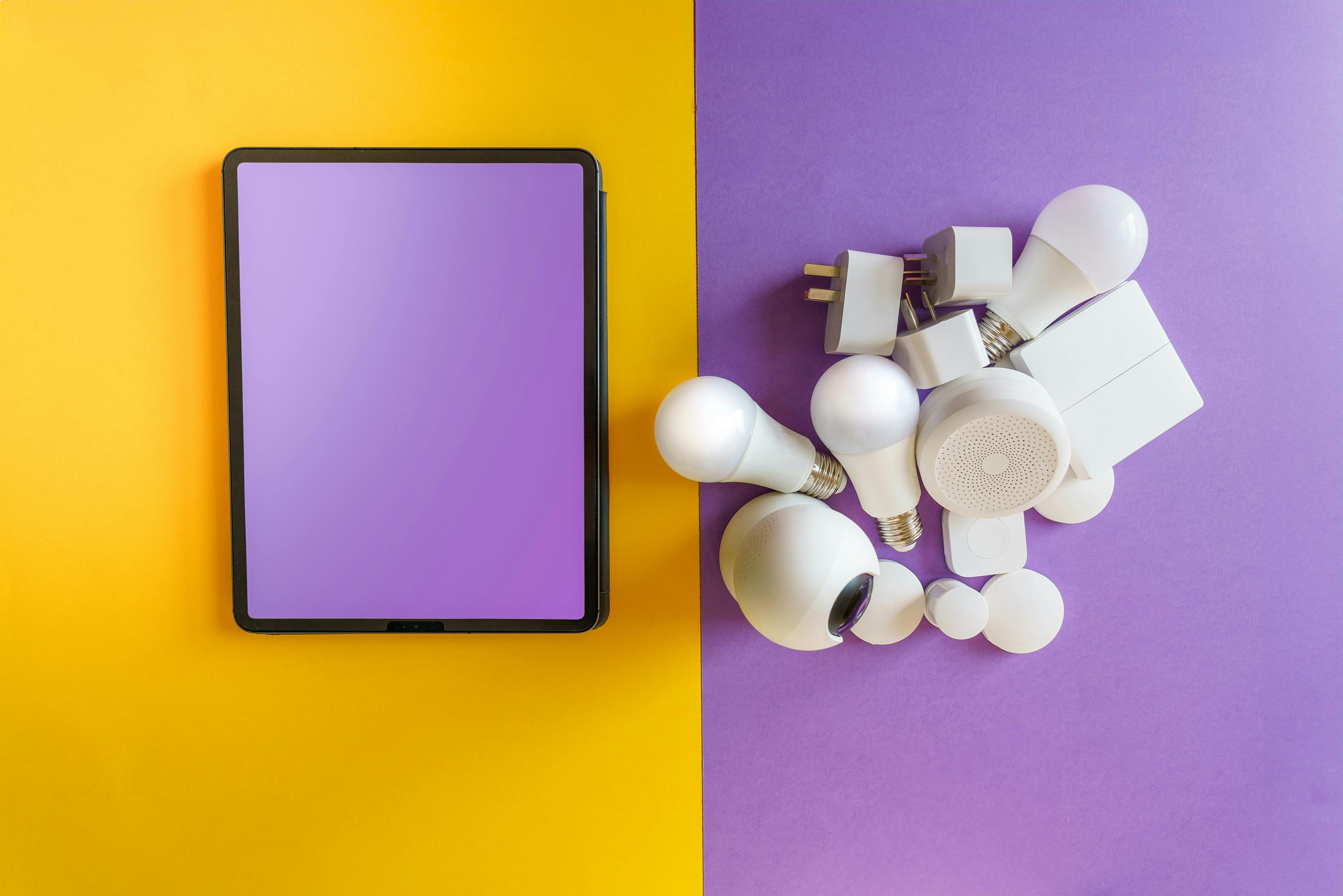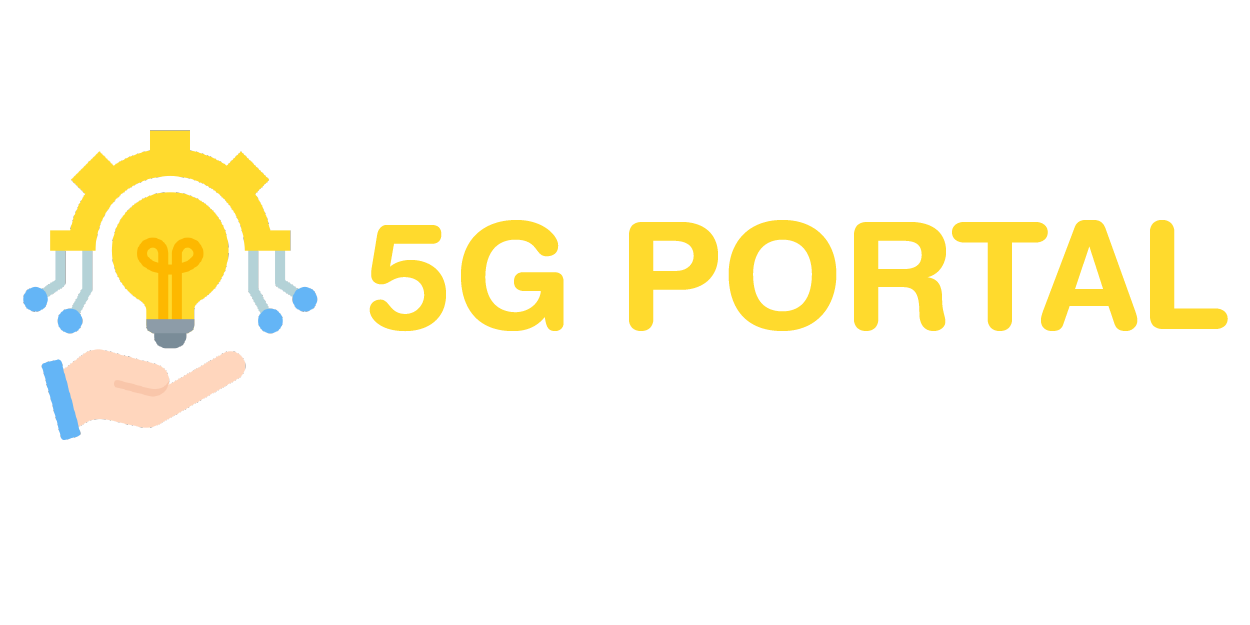What Are the Must Have Apps for Working Professionals?

How Can Productivity Apps Enhance Your Workflow?
- Productivity apps manage tasks, projects, and communication, increasing efficiency.
- Trending Apps 2024: Pumble, Microsoft Teams, Notion. Each has unique advantages and limitations.
- Task management apps like Google Keep and Habitica simplify daily organization.
- Time tracking and scheduling apps such as Clockify and Google Calendar aid in time management.
- Notable project management tools: Wrike with AI capabilities and monday.com for user-friendly design.
- Communication tools: Pumble, Microsoft Teams, and Google Chat, each with specific integration pros and cons.
- Note-taking apps: Notion, Google Keep, and Obsidian offer customized organizational features.
- Cloud storage solutions like Google Drive and Dropbox facilitate secure file sharing and accessibility.
- Automation tools (Zapier, IFTTT) streamline operations by linking apps and automating tasks.
In today's fast-paced world, having the right tools is crucial for success. For working professionals, the right apps can transform chaos into order, boosting productivity and efficiency. Whether you're drowning in emails or juggling tight deadlines, there's an app designed just for you. This guide will unveil the must-have apps every professional needs in 2024. From task management to collaboration software, discover how these digital tools can revolutionize your workday and keep you ahead of the curve. Ready to elevate your productivity? Read on!
How Can Productivity Apps Enhance Your Workflow?
Productivity apps are vital tools for professionals. These apps help you manage tasks, projects, and communication efficiently. With the right productivity apps, you can streamline your workflow and focus on what truly matters.
What are the trending productivity apps for 2024? Differtent apps have emerged in 2024, showing new ways to enhance productivity. Apps like Pumble, Microsoft Teams, and Notion are gaining traction. Pumble stands out for its free plan with strong video calls, yet it lacks native integrations. Microsoft Teams is loved for its seamless integration with Microsoft 365, though it has some limits in channel use. Notion’s customizability makes it a favorite for tailored project management and note-taking, though it enhances security mainly in paid plans. Each app serves distinct needs across different aspects of a professional's workflow.
How do these apps improve daily task management? They simplify task creation and management, making it easier to track progress. For example, check out more options here. Google Keep is great for simple note captures but lacks customer support. Meanwhile, Habitica uses a game-like interface to encourage task completion. It might seem outdated in design, but it pushes accountability in a fun way. These apps help you manage tasks by keeping everything in one place, making it easier to see what you need to get done.
Why are productivity apps crucial for professionals today? In today’s busy world, time is precious. Productivity apps help professionals save time by automating routine tasks. They integrate with other software, allowing smooth data flow without manual transfer. This integration helps you spend less time switching between tasks and more time being productive. In addition, these apps often include reporting features, such as in Clockify, which aid you in understanding how time is spread across tasks.
When choosing productivity apps, consider what fits best with your work style and industry. Todoist is simple and syncs across devices, but you might need to pay for extra features. If you value fun, Habitica turns daily tasks into a role-playing game. If you need time management support, apps like Clockify, Toggl Track, and TimeCamp are helpful. Though they each offer robust time-keeping solutions, they differ in being best for teams versus individuals. Testing these tools will help you find what suits your needs and enhances productivity.
Project management apps like Plaky and Wrike bring structure to larger tasks. Plaky has a simple design and a Gantt timeline for clear project vision, though it lacks automation. Wrike includes AI for task automation and predicting risks, but it might be expensive for small firms. Leveraging tools like monday.com can offer more versatility, but the standout features often come with higher-priced plans. As your work develops, these apps can help manage and track multifaceted projects.
Communication remains key in any work setting. Apps like Pumble and Microsoft Teams streamline communication within teams. While Pumble’s high-quality communication is cost-friendly, users might miss native integrations. Microsoft Teams connects smoothly with existing Microsoft products, facilitating seamless use in workplaces already using Microsoft tools. However, both have limitations in specialized contexts, so identifying workplace priorities is key.
Ultimately, productivity apps help create order in chaos, offering professionals directed, efficient workflows. By incorporating these apps into your daily routine, you can enhance your efficiency and focus on delivering high-quality work.
Which Task Management Tools Stand Out for Professionals?

When it comes to staying organized, task management tools are crucial. With so many options, which ones are the best for us? A great app combines ease of use, syncing across devices, and prioritization features. Here are some standout options:
Todoist
What makes Todoist essential? Its user-friendly design and multi-device sync are key features. You can easily jot down tasks and return to them anytime, whether on your phone, tablet, or computer. However, some advanced features remain limited even with a paid plan. This may be a drawback if you're looking for extensive customization.
TickTick
How does TickTick compare to Todoist? TickTick offers more options for task prioritization and time tracking. One of its strengths is its ability to integrate a calendar view, although that's only available with a premium account. If juggling deadlines is part of your daily routine, this app could help you keep tabs on what's next.
Habitica
What innovative feature does Habitica offer? Habitica turns to-do lists into a gaming experience. Completing tasks earns points, much like in an RPG. While fun, its interface feels a bit outdated. But if gamification motivates you, it’s worth trying.
For those interested in intuitive designs and fun ways to manage tasks, check this list of apps.
Innovative Features in Task Management Apps
The task management tools aren't just about listing chores. Some apps use unique features to stand out. Let's explore some examples that grab my attention:
-
Pomodoro Timers: Apps like TickTick integrate the Pomodoro technique, breaking work into sprints with short breaks. I find this approach fosters better focus and productivity during intense working hours.
-
Habit Tracking: Apps like Todoist provide habit tracking, which I use for daily routines. It serves as an excellent reminder to stay on course for personal and work habits alike.
-
Automations: Imagine creating tasks seamlessly from your email. Through connecting your inbox to some task management apps, you can do just that. Wrike, for instance, leverages automation to reduce your routine task burden.
- Widgets: Most of these apps offer home screen widgets, a time-saving bonus. Having my to-do list right there makes me a bit more productive by nudging me subtly, without the need to open the app itself.
Different apps suit different needs. Examples like Todoist or TickTick show how technology assists us in keeping on top of our tasks and planning days efficiently.
Given the influx of innovative task management apps, there's something for everyone. Whether you seek simple list-making or a full-featured tool, you can choose the one that fits your style. The key is finding what maximizes your efficiency without feeling overwhelmed. If we dive into them, our productivity can thrive, transforming our workdays from stress-filled to smooth-sailing.
What Are the Best Project Management Software Options?

In the fast-paced world of work, effective project management is key. Two powerful tools—Wrike and monday.com—offer smart solutions for boosting team productivity. Let's dive into what makes them shine and explores their unique features for remote work.
Wrike’s Winning Features
So, why Wrike? It's exceptional due to its advanced AI technology. Wrike automates tasks and predicts risks, keeping projects on track. The main draw is its ability to bring all tasks into one clear view. Teams can see who is doing what, by when, without any confusion. This clarity makes collaborative tasks feel seamless and organized. But a heads-up: small businesses might find Wrike pricey due to its strong features.
How Wrike Facilitates Remote Collaboration
What about remote work? Wrike lets teams work together from anywhere. Picture a virtual office where everyone sees the same tasks and updates in real-time. Wrike's dashboard is customizable, so each team member can tweak it to suit their needs. With Wrike, gone are the days of sifting through endless email chains; everything happens in one place.
The Versatile Appeal of monday.com
Switching gears to monday.com, a tool that bursts with flexibility. Its appeal rests in its user-friendly design, which suits both newbies and tech-savvy professionals. Users love its color-coded boards that transform dull tasks into engaging visuals. Each project or task can be depicted in a way that helps people see priorities at a glance.
How monday.com Enhances Team Collaboration
Remote team synergy is also a hallmark of monday.com. Just like Wrike, it keeps everyone connected through intuitive features. Teams can chat, update tasks, and share files—all in one place. Built-in notifications ensure that everyone stays in the loop without redundant e-mails. This ease of use means less time spent coordinating, and more time focused on what matters.
Comparing the Tools: Benefits and Drawbacks
Let's break down the pros and cons of these tools. Wrike boasts robust project management capabilities and AI tools. However, for some, the cost may be a hurdle. It's like buying a high-performance car—great if you need all the bells and whistles, but possibly overkill if not.
monday.com offers a spread of educational aids for new users, along with a vibrant, visually appealing interface. However, its advanced features might be reserved for more expensive plans. That's like starting with a basic car model and needing to upgrade for luxury features.
How to Choose the Right Software
When deciding between Wrike and monday.com, ask yourself a few questions. How big is your team? Do you need sleek automation? Or maybe a simpler interface will suffice? Both platforms are excellent, but choosing depends on your specific needs.
The Essence of These Tools in Remote Environments
Both Wrike and monday.com make remote work less stressful and more productive. They provide a platform where teams can share responsibilities and see progress in real-time. This real-time visibility is crucial, especially when team members sit miles apart.
Lastly, as we toggle between these powerful tools, remember that it's about finding what fits your workflow best. Whether it's Wrike's AI-driven paths or monday.com's vibrant boards, each offers a unique route to successful project management in today's dynamic workplace landscape.
How Do Collaboration and Communication Apps Improve Team Dynamics?

When we think about working as a team, good communication is key. Let’s explore the top collaboration apps that remote teams love. Apps like Pumble can make team chats easy. It offers free, high-quality video and audio calls. The downside is it lacks many integrations, which means you can't connect it to other tools. However, its free plan makes it accessible for all kinds of teams.
Microsoft Teams is another app many teams use. It helps combine chat, video, and file sharing in one place. A key advantage is its integration with Microsoft 365 at no extra charge. This combo gives access to familiar apps like Word and Excel. But Microsoft Teams has channel limitations, which can make communication slightly challenging in large teams.
Google Chat is a tool professionals might already have without realizing it. It’s part of Gmail, making it easy to access. Google Chat is simple enough, but its in-line threading can confuse new users. The app now has an AI tool that helps summarize long conversations, offering a quick way to get caught up.
Given these options, one should ask: What are the top collaboration apps for remote teams? High-precision answer: Pumble, Microsoft Teams, and Google Chat are top picks. They facilitate chats, seamless integration with existing tools, and allow teams to work efficiently from anywhere.
How exactly do these apps support communication within teams? High-precision answer: They let team members share ideas, files, and updates fast. With apps like Pumble, remote teams stay connected through clear calls and messages without breaking the bank. Microsoft Teams ensures easy document sharing with built-in tools. It holds everything needed for project work in one digital space. Google Chat presents an opportunity to keep discussions organized through the familiar Gmail interface. Though, its threading design might take some getting used to.
However, not everything is perfect with these applications. What are the limitations to be aware of in these tools? High-precision answer: Some apps have integration limits and offer premium-only features. For example, Pumble's lack of integrations might require other tools for certain tasks. Microsoft Teams, though robust, can restrict communication due to its channel structure. Users may need to juggle channels to find what they need. Google Chat, while integrated with Gmail, requires learning how in-line threading works for effective use.
Understanding both the benefits and the possible drawbacks of these collaboration apps can better equip professionals to pick the right tool for them. Given the ways these apps are used, tailoring them to specific needs is often best for promoting efficient team dynamics. You can explore more about team app dynamics on PCMag's series.
In today’s work environment, selecting the right tool is about matching it with how your team likes to operate. When communication flows smoothly, teams can make decisions faster and stay aligned on goals. Remember to consider what each app can do and where it might fit into your current workflow.
Which Note-Taking Apps Should Professionals Consider for Organization?

Let's explore some top note-taking apps that help you stay organized. Notion, Google Keep, and Obsidian are among the leaders in this space. They offer unique features tailored to professional needs and can significantly boost your productivity.
Benefits of Using Notion and Obsidian
You may wonder, "What are the main benefits of using Notion and Obsidian?" Precision-wise, Notion and Obsidian boost organizational skills with customizable features and strong linking abilities, respectively. Notion is highly adaptable. You can create to-do lists, track projects, and plan your week—all in one place. It consolidates all tasks, reducing the need for multiple apps. This level of customization means you can tailor it specifically to the way you work best.
Obsidian focuses more on creating connections between pieces of information. It uses a unique graph view that helps visualize how ideas are linked. This can be exceedingly helpful for people working on complex projects, where seeing the relationship between tasks is crucial.
How Do These Apps Help Organize Information and Tasks?
How do these apps help in organizing information and tasks? Directly, they streamline task tracking and information flow, improving your workflow dramatically. Notion becomes a central hub for managing various types of content. You can store meeting notes, attach relevant files, and even embed other services like Google Calendar. It turns scattered bits of information into a structured workspace.
Obsidian, with its internal linking system, enables you to create a web of information. This is perfect for creating a knowledge base where you can refer back to old notes and see connections you might have missed. It boosts your ability to recall and interact with stored information.
Unique Features of Google Keep
Lastly, you may be curious, "What unique features do apps like Google Keep offer?" Precisely put, Google Keep is simple and efficient for capturing ideas instantly. It's like having sticky notes on your phone. One of its standout features is location-based reminders. So, if you make a note about buying groceries, it can ping you when you’re near the store.
Google Keep syncs effortlessly with other Google services. It integrates with Google Drive, making sure all your notes are safe and accessible from any device. You can share individual notes with others, which is helpful for quick collaborations.
Making the Most of Note-Taking Apps
To make the most out of these apps, think about your specific needs. If you require comprehensive project management with high customizability, Notion might be your go-to. It blends several productivity aspects into one platform, from task management to team collaboration. For a deep-dive into information and easy retrieval of past notes, try Obsidian. Its linking ability crafts an interconnected knowledge map, ideal for exploring multilayered ideas or complex data.
If your needs are more immediate and quick, Google Keep meets the mark. Capture ideas on-the-go, remind yourself of tasks, and easily retrieve information when needed. It offers simplicity without sacrificing utility, making it suitable for straightforward note-taking requirements.
Remember, investing time in these apps to set them up properly can pay off in the long run, enhancing efficiency and clarity in your daily job. Each app provides substantial tools to arrange your professional life, one note at a time. For visual thinkers, exploring MindNode can also add dimension to your organization tactics, while Things keeps tasks prioritized. Find what suits your approach and elevates your workflow.
What Role Do Time Tracking Software and Scheduling Apps Play in Managing Workload?

Do you ever feel like the hours in your workday just disappear? I've been there. Managing time well is key. That's where time tracking software and scheduling apps come in handy. They help us see exactly how we spend our time, allowing us to make better decisions.
Precision in Time Management with Clockify
How does time tracking software like Clockify improve productivity? Precision. Clockify helps you see where time goes and identifies time sinks. It works as a clock you start and stop on your tasks. You see which tasks eat up your time and can make plans to fix that. For teams, it offers more. With Clockify, you can tag tasks, view detailed reports, and even track billable hours. It shows the true picture of your work habits and offers insights into productivity. This makes sure more time is spent on important tasks.
Finding Balance with Scheduling Apps
What are the best scheduling apps for maintaining work-life balance? Apps like Google Calendar and Wunderlist are prime picks. They help you plan and protect your personal time. Google Calendar integrates with many tools, syncing with email apps to alert you of meetings. It lets you block time for work and life equally. Wunderlist is helpful for those who like ticking off lists. It organizes tasks, personal projects, and group meetings. Both apps create a balance by keeping an eye on your time so you can switch off after work.
Streamlining Schedules with Tech
How do these tools help streamline task schedules? They provide clarity and order to chaotic days. With these apps, set priorities and deadlines easily. This keeps tasks from piling up and creates a clear line of sight for your day. Imagine planning your week with just a few taps. Scheduling apps remind you of tasks ahead of time. They let you adjust your plans on the fly and share them with peers. Sync schedules with coworkers to avoid clashes and see when they're available for chatting or meetings. Apps make cooperation and planning so much easier, connecting the dots for efficient work.
Decision Making Made Simple
When it comes to decision-making, these tools are allies. Time tracking apps show how long processes usually take. This aids in estimating timelines and setting more realistic goals. Scheduling apps reduce the worry of overlapping tasks. Your calendar is like a visual map where you play Tetris to achieve your best day. Notifications prevent you from forgetting tasks, ensuring crucial ones are never skipped.
Integration with Team Tools
When combined with team apps like Microsoft Teams or Pumble, your workday becomes more agile. Microsoft Teams merges scheduling with task lists. Communicating with your team while staying on task becomes seamless. You never miss a beat. Pumble, known for easy calling and chatting, pairs with this to support full remote team days.
Time tracking and scheduling make life easier for working folks. They give structure, help keep a balance, and improve time use. Pair these with your other work tools, and you're set for success. You might work, but your day no longer controls you—you're in control.
What Cloud Storage and File Sharing Solutions Are Essential for Professionals?

Cloud storage and file sharing tools have become vital for modern professionals. They allow easy access to important documents from anywhere at any time. One standout platform in this field is Google Drive. How does Google Drive facilitate secure file storage and sharing? It allows users to store files securely online and share them with others easily by providing specific permissions. This ensures files remain safe, yet accessible, to chosen individuals. Google Drive also offers seamless integration with other Google services, which boosts its effectiveness in everyday tasks.
Certainly, not every cloud storage solution is created equal. Some of them offer unique features that make them stand out. For example, Dropbox has excellent synchronization capabilities. What features make Dropbox notable? Dropbox provides automatic syncing across devices, ensuring that the most recent file versions are always available. Its Smart Sync feature can save hard drive space by keeping files in the cloud while allowing access to them from a desktop interface. Additionally, Dropbox Paper allows document collaboration online, making it useful for teamwork.
On the other hand, professionals often find themselves needing robust file management tools. Microsoft OneDrive is another popular choice for many. It integrates efficiently with Microsoft Office applications. Why is OneDrive a preferred option for professionals? OneDrive offers 1 TB storage capacity for many users with Microsoft 365 subscriptions, making it cost-effective. Plus, its built-in security measures like Personal Vault offer extra protection for sensitive files.
Professionals benefit from integrating cloud storage and file sharing solutions into their workflow in many ways. Storing files on the cloud cuts down on the need for physical storage devices, such as USB drives, which can be easily lost or forgotten. This convenience allows for better file organization and management. Moreover, cloud solutions often come with built-in security features that help keep data secure from unauthorized access. This frees professionals from worrying about data privacy or file corruption, improving their peace of mind.
Cloud solutions also simplify collaboration. When teams can access documents from the cloud, it speeds up decision-making and enhances teamwork. For instance, the ability to edit in real-time and leave comments directly on documents optimizes the review process and ensures tasks are completed efficiently. Enhanced collaboration keeps all parties aligned and reduces the time wasted in back-and-forth emails.
File sharing is also made easier with these solutions. You can send a file link instead of attaching large files to email, which can lead to delivery issues due to size limits. This also offers better control over who accesses your files since permissions can be set to allow view-only access or even restricted to specific users.
Integrating these solutions can transform how professionals manage their workloads. Ever heard of remote work cultures thriving due to efficient file-sharing systems? This is because sharing, updating, and accessing files from anywhere become seamless. Accessibility leads to improved workflows and boosts productivity, as everyone can work uninterrupted from any location.
However, choosing the right cloud storage or file-sharing app requires careful consideration of your specific needs. Evaluate factors like storage capacity, integration capabilities with existing software, security features, and pricing. This ensures you select a service that complements your work habits and enhances your productivity efficiently.
In summary, integrating cloud storage and file-sharing tools can dramatically improve the way professionals work today. They provide security, facilitate collaboration, reduce storage needs, and improve file management. Opt for the one that aligns best with your work style and will enhance your workflow the most.
How Can Automation Tools Streamline Business Operations?

What makes work smooth and swift? Automation tools! You might ask, "What are the most popular automation tools for business professionals?" The answer: Zapier, IFTTT, and Microsoft Power Automate top the list. These tools link apps and automate tasks without any coding.
Zapier is a standout. It connects over 2,000 apps. You can automate almost any repetitive task you face. For example, it can add email attachments to Google Drive and then alert you in Slack. This saves you time and closes the door on manual errors.
IFTTT, which means "If This Then That," is simple to use. It allows you to create chains of simple commands. Suppose you want all your tweets saved to Google Sheets. IFTTT can do that for you automatically.
Microsoft Power Automate is baked into Microsoft 365. It helps automate workflows across apps. It is perfect for businesses using Microsoft products. It has over 330 built-in data sources and connects with almost any online service.
But why invest in these tools? They save time. They reduce errors. They let you focus on more critical work, like thinking up new ideas.
"How do tools like Zapier enhance productivity by automating tasks?" is the next logical inquiry. Zapier works in the background, doing repetitive tasks. It handles email alerts, updates CRM entries, and backs up files to a cloud drive. Professionals love it because it helps manage time better and eases workload.
Automation does more than cut workload. It boosts team interaction. Tools like Microsoft Teams and Google Chat connect your team instantly. Microsoft Teams integrates with Office apps. This makes switching tasks a breeze. Google Chat lets you work straight from Gmail with chat and AI features.
Integrating automation tools does wonders for workflow. So, "What are the benefits of integrating automation tools into daily operations?" First, reduced human error is key. Mundane tasks like data entry often carry mistakes. Automation tools handle these with precision. Next, focusing on strategy instead of operations becomes easy. When tasks run themselves, think better strategies or refine processes. Third, you gain insights faster. Automation tools gather data from various tasks. They deliver insights swiftly, helping quick decisions.
The choice of automation tools should match your field and needs. While Zapier, Microsoft Power Automate, and IFTTT lead, select tools best suited to your needs and systems. This ensures your operations are smooth, efficient, and error-free.
Communicate frequently—through Pumble, for example. It offers free plans of high quality for audio and video but lacks native integrations. Thus, pairing it with other automation tools like Zapier can cover any gaps.
In a world where work can feel overwhelming, automation tools are a lifesaver. By minimizing errors, decreasing effort, and improving communication, they help us meet work demands efficiently. Automation can change how we work radically if used properly. Keep exploring and using its vast potential, and let your tasks manage themselves.
Conclusion
Productivity apps and tools are vital in today's fast-paced work environment. From managing daily tasks with top apps, like Wunderlist, to efficient project management via Wrike, these tools are indispensable. They boost efficiency, streamline tasks, and enhance team collaboration. As technology evolves, embracing these solutions empowers professionals to excel. Keep exploring and integrating these apps to stay ahead in your journey through the tech landscape.






